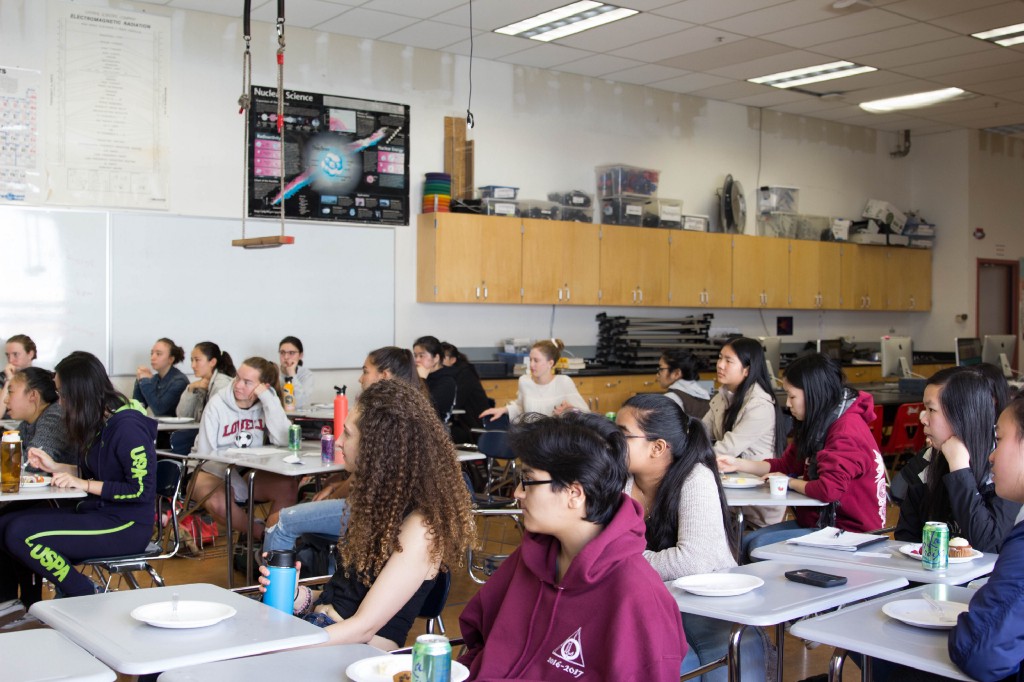
O n Feb. 2, a group of female Lowell students met in the science building for an annual panel presentation from women working in STEM fields, organized by AP Physics C teacher Richard Shapiro. The gender gap in Lowell’s AP Physics C is a long-standing phenomenon. The problem is even more severe this year — the female ratio has plunged to 23.6 percent.
This year, the panel included two Lowell alumnae who recently graduated from college: Alison Ong from UC Berkeley and Natalie Luu from Stanford. A few students who are currently taking AP Physics C also attended this event to encourage other female students from lower level classes to take this class.
Ong and Luu addressed a range of different topics about STEM, including the benefits of taking AP Physics C in high school, what college STEM majors are like and what it’s like to be a woman in STEM careers. The panelists shared many of their experiences in STEM as well as why they thought the female perspectives were important in these careers. “If you only have the male perspective in the sciences, that is not equitable,” Ong explained. “That is not encouraging people who can but do not participate.”
“Women are great at this stuff, are great quantitative thinkers, are very good at approaching and solving problems”
According to Luu, STEM majors can make female job seekers stand out because there are not many females doing STEM and people think that it is a hard field to work in. Luu is now the second female working at an inventure capital firm. “When you do something that is difficult, they have more respect for you,” she said. “I am excited to prove myself as an investor, regardless of my gender.”
However, there are also challenges for female in STEM. For example, it was initially hard for Luu to make friends in her classes at Stanford in which the majority were males. “If I was a guy, maybe it would be more natural, because everyone else are all guys,” she said. Luu also said that sometimes, as a female student, she would need to do extra work because it was hard to receive help from her few female peers.
At the end of the presentation, both the Lowell alumnae encouraged the students to try physics. “Women are great at this stuff, are great quantitative thinkers, are very good at approaching and solving problems,” Ong said. She pointed out that in the 1950s, the field of computer science was dominated by women.

Many attendees of this panel had already been interested in STEM. After the panel, 24 girls participated in a survey conducted by this reporter, and 96 percent of them responded that the panel helped them gain more understanding of STEM and that they would continue to pursue STEM in the future.
After learning the panelists’ experiences and that physics knowledge is helpful in many other fields, junior Sarah Cai and freshman Wenna Luu decided to include AP Physics C in their future schedules.
“If you only have the male perspective in the sciences, that is not equitable… That is not encouraging people who can but do not participate.”
Junior Clarisse Aruino also changed her views on this physics class after attending the panel. She enjoyed taking AP Physics 1 during her sophomore year, but her perceptions had kept her away from AP Physics C. “I was hearing all these rumors of how AP Physics C is kind of hard and calculus is hard, so to combine them would be super hard,” she said. After hearing how helpful the AP Physics C class was, she is leaning toward taking the class next year.
However, some students still expressed concerns about the difficulty of getting a good grade at AP Physics C. The female students currently in this class were able to allay their fears, saying that it is not hard to get a good grade in AP Physics C as long as you do the work and put in the effort. “Mr. Shapiro is pretty reasonable for grading,” Luu said.














